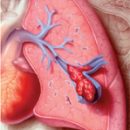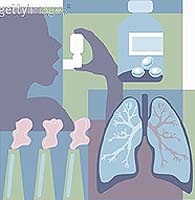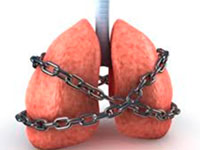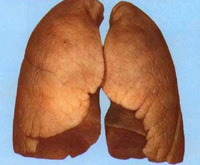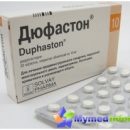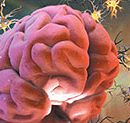Respiratory Distress-syndrome of adults - this is a severe complication of many diseases and injuries, manifested by a disadvantage of oxygen in the blood due to the defeat of the respiratory organs. Read more about the causes of the occurrence, manifestations and treatment of the disease, read in the article.
Content
Respiratory Distress-syndrome of adults (synonym Shock light) - lung damage resulting from blood circulation impairment in lung vessels, followed by damage to the tissue of the lung and its inflammation. Develops in patients who have undergone severe injuries with a loss of large amounts of blood, with severe infectious diseases, electric shocks, cramps, poisoning, and t.D. Often it occurs after temporary improvement of the condition on the background of the treatment.
Manifestations of respiratory distress syndrome adults
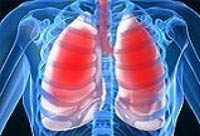 For respiratory distress syndrome, adults are characterized by consistent development of changes in lungs with typical manifestations, spent on respiratory failure (lack of oxygen in the body tissues due to respiratory disorders). Here are the main stages of the disease:
For respiratory distress syndrome, adults are characterized by consistent development of changes in lungs with typical manifestations, spent on respiratory failure (lack of oxygen in the body tissues due to respiratory disorders). Here are the main stages of the disease:
- In the stage of the stage, shortness of breath arise, the pulse is studied, man becomes restless. Often it becomes blunt fingertips, nose, ears. There is a cough with a sputter containing streams of blood.
- In stage II, which develops after 2-3 days, the state of a person worsens, a psyche impaired, resembling white hot. The patient appears hallucinations, often terrible, he screams, behaves inadequate.
- For stage III, the continuation of the deterioration of the patient's condition is characterized. Breathing becomes superficial, blood pressure drops.
- In IV stage, the patient's condition becomes extremely heavy. Not only breathing with pure oxygen, but also artificial respiration with the help of the device.
- V Stage - Terminal. Despite all the treatment, the patient save no longer.
Treatment of respiratory distress syndrome of adults
Treatment is quite complex. A person must be immediately taken to the hospital, where he will make the necessary tests and will begin treatment, and, if necessary, will provide oxygen and will be transferred to artificial respiration. Treatment is usually carried out in resuscitation departments.
It is important to eliminate the cause that caused the disease as soon as possible, and then try to fully provide tissue with oxygen. In I and II, stages are sufficient tools that improve the transfer of oxygen by blood, and in more running stages - inhalation of moisturized oxygen and artificial respiration. The effect of treatment depends on its timeliness. Mortality in the IV syndrome stage reaches 80%, and in the V stage, all patients usually die.


